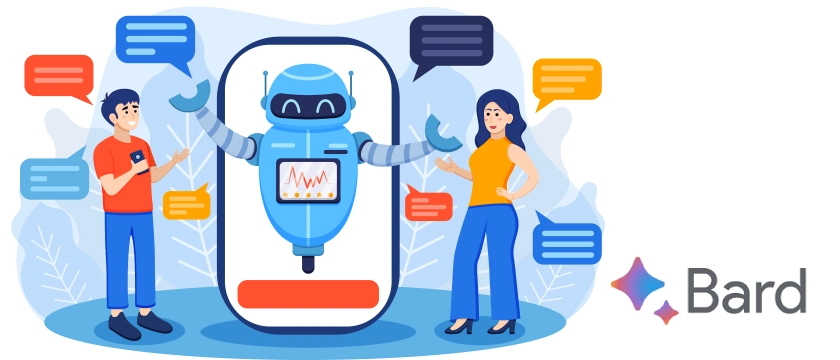Introduction
As we usher in 2024, Google Bard has emerged as a powerful tool, promising to reshape the digital marketing landscape. Let’s delve into the pros and cons of Google Bard, exploring its potential impact on digital marketing strategies.
Pros
- Enhanced User Experience: Google Bard focuses on creating a seamless and intuitive user experience. Its user-centric design ensures that visitors to your website interact positively, potentially leading to increased engagement and conversions.
- Voice Search Optimization: With the growing prominence of voice search, Google Bard incorporates advanced voice recognition technology. This enables businesses to optimize their content for voice searches, tapping into a rapidly expanding market.
- Rich Media Integration: Google Bard supports dynamic content formats, including videos, images, and interactive elements. This versatility allows marketers to craft visually appealing and engaging content, enhancing the overall impact of their campaigns.
- Personalized Recommendations: Leveraging artificial intelligence, Google Bard provides personalized recommendations based on user behavior and preferences. This allows marketers to tailor their strategies and content to meet the specific needs of their target audience.
- Cross-Platform Integration: Google Bard seamlessly integrates with various digital platforms, enabling marketers to streamline their campaigns across different channels. This unified approach enhances consistency and coherence in messaging.
Cons
- Learning Curve: Implementing Google Bard may pose a learning curve for marketers unfamiliar with its features. Adequate training and resources are essential to harness the full potential of this tool, potentially requiring additional time and investment.
- Privacy Concerns: Privacy concerns may arise as Google Bard relies heavily on data analytics and user behavior. Marketers must navigate carefully, ensuring compliance with evolving privacy regulations to maintain trust with their audience.
- Dependency on Google Ecosystem: Google Bard is deeply integrated into the Google ecosystem, potentially limiting its compatibility with other platforms. Marketers relying heavily on non-Google tools may need help achieving a seamless workflow.
- Algorithmic Changes: The dynamic nature of search engine algorithms means that changes in Google’s algorithms could impact the effectiveness of Google Bard. Marketers must stay vigilant and adapt their strategies accordingly to stay ahead of potential algorithmic shifts.
- Resource Intensive: Implementing and maintaining Google Bard may require additional resources in terms of time and financial investment. Smaller businesses with limited resources may need help fully leverage this tool’s capabilities.
Conclusion
In the ever-shifting digital marketing landscape, Google Bard stands as a promising innovation with advantages and challenges. While it offers many features to enhance user experience and streamline marketing efforts, marketers must carefully weigh the potential downsides. As we move into 2024, understanding and adapting to the evolving digital marketing landscape will be crucial for success, with Google Bard playing a significant role in shaping the industry.
To learn more or to acquire our services, please contact us at [email protected]





